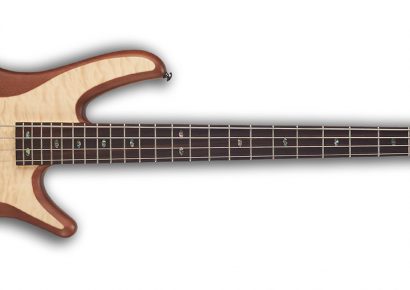Figure A takes a common D major chord shape and plays it in the 4th fret, making it an E major. Listen to it over the E bass note (open 6th string) as a start, then move it to the second chord. We get a dominant kind of sound thanks to the D note and the F# (the 9th). The third voicing is a G major triad that has a minor sound over the E bass note. For some tension try the last voicing. Looking at the top three strings you’ll notice it’s the same D shape as all the other examples, against the E bass it definitely conjures up some interest though.
Figure B keeps our E note in the bass and starts with our D major shape E voicing on top. Beat two creates some tension by flattening the B and G# respectively (to Bb and G natural). Repeating this descending idea we get A, E and F# in the third voicing creating a kind of B7sus4 sound that sounds like it wants to move to the fourth voicing – an E major chord. In terms or physical movement it’s fairly straightforward on the guitar, keeping the note movement minimal also. This can sound nice, neat and compact as opposed to jumping all over the fretboard using different registers.
Stretching the triad idea a little, let’s try Figure C – keeping in our E major kind of sound the idea is that each voicing is moving as little as possible, in most cases just one note, and on guitar that keeps things close by only moving a fret or two. Play these slowly and see if you can get your ear around the movement. Hopefully they suggest some sounds/chords to you and highlight that you don’t have to move a whole shape each time to hear a new sound or chord. This can be used in any style and is a great tool for accompanying and song writing. More of this next month.




